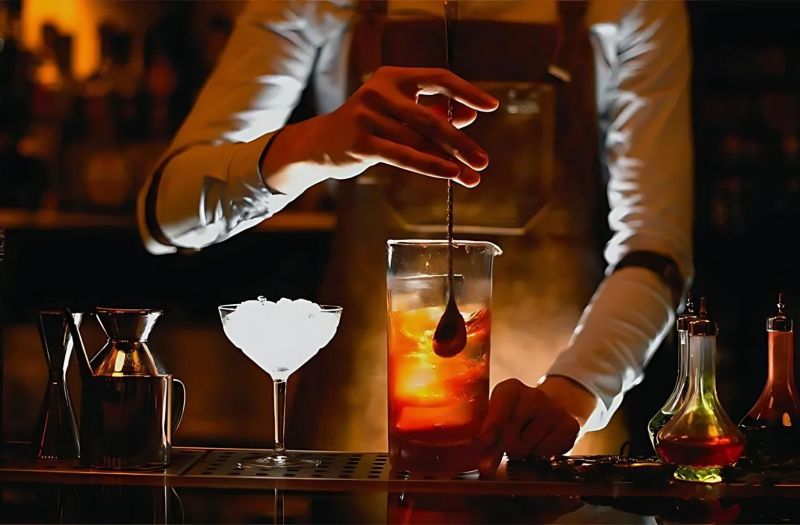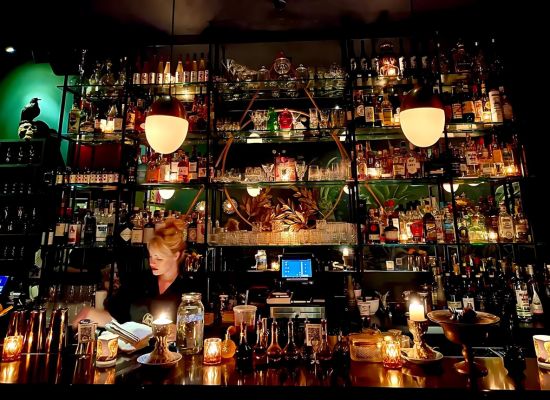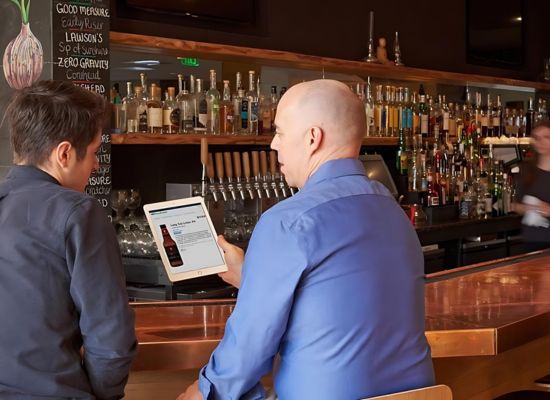Educating Bartenders Worldwide.
By Beverage Trade Network

In the highly competitive world of hospitality, the delicate balance between cash and cachet is crucial for creating successful beverage programs and forging profitable supplier partnerships. The theory of "cash vs cachet" is a key driving force in menu engineering, guiding operators and suppliers in crafting offerings that not only meet guest demand but also elevate the establishment's brand and experience. In essence, cash refers to the direct financial return of a product, while cachet represents the prestige and desirability it brings to an establishment. By understanding where their products fall on this spectrum, suppliers can better align their offerings with the needs and expectations of their target audience. Likewise, operators who grasp the marketing strategies and appeal of their supplier partners can curate a beverage program that is both profitable and brand-enhancing. This article focuses on the nuances of cash vs cachet, providing insights for suppliers, distributors, and on-premise operators in the restaurant and bar scene.
Menu engineering is an art and a science, where operators strive to balance guest preferences with profitability. The concept of cash vs cachet plays a pivotal role in this process. Cash, in this context, refers to the immediate profitability of an item, the hard numbers that indicate whether a product contributes to the bottom line. These are the well-priced, crowd-pleasing options that keep the cash registers ringing. On the other hand, cachet represents the intangible value an item brings to an establishment, its ability to elevate the brand, create buzz, and draw in a certain clientele. For example, a classic gin and tonic might be a high-cash item due to its low cost and high demand. Meanwhile, a craft cocktail featuring an obscure, artisanal spirit could be considered high-cachet, perhaps less frequently ordered, but capable of enhancing the establishment's reputation as a sophisticated, trendy venue. The key to successful menu engineering lies in finding the right mix of cash and cachet items, ensuring the menu is profitable and aligned with the brand's identity.

Source: Cup of Zest
For suppliers, knowing where their products fall on the cash vs cachet spectrum is essential for effective market positioning. Products that lean towards cash typically have strong profit margins and high sales potential, such as popular brands or items that tap into current trends like low-ABV cocktails or hard seltzers. These products often benefit from marketing strategies that emphasize their broad appeal and profitability, making them attractive options for operators looking to maximize revenue. On the other hand, products leaning towards cachet bring unique value to an establishment, often through premium spirits, rare wines, or innovative craft beverages that cater to a more selective audience. Suppliers of these products tend to focus on storytelling, highlighting aspects like quality, craftsmanship, and exclusivity to create a distinctive appeal. For example, a small-batch, artisanal whiskey might be promoted for its unique production process and limited availability, offering establishments the chance to feature a signature drink that stands out in the market. By understanding their product's place on this spectrum, suppliers can tailor their marketing efforts, promoting high-cash products through profit-focused campaigns and high-cachet products through exclusive events or partnerships that target niche markets.

Source: Eater New York
For operators, the challenge lies in curating a beverage program that balances cash and cachet, catering to the diverse tastes of their clientele while ensuring profitability. A well-rounded beverage program should include a mix of both high-cash and high-cachet items, allowing the establishment to appeal to a broad audience while also differentiating itself in a crowded market. To achieve this balance, operators must first understand their target demographic. A neighborhood bar might prioritize high-cash items—such as popular beers, wines, and classic drinks—while sprinkling in a few high-cachet offerings to keep things interesting and attract a more adventurous crowd. Similarly, a high-end cocktail lounge might focus more on cachet, offering a carefully curated selection of rare and premium spirits, craft cocktails, and artisanal mixers, with a few high-cash items to ensure steady revenue.
Successful operators also recognize the importance of working closely with their suppliers to build a beverage program that aligns with their brand and financial goals. By understanding the marketing strategies and value propositions of their supplier partners, operators can make informed decisions about which products to feature, how to price them, and how to promote them to their clientele. For instance, a supplier who positions their product as high-cachet might offer support in the form of staff training, custom cocktail development, or promotional events that highlight the product's unique qualities. This can help the operator justify a higher price point and create a sense of exclusivity around the offering, which can, in turn, attract a clientele willing to pay a premium for a unique experience.

Source: Eater New York
To illustrate the importance of balancing cash and cachet, consider the case of a well-known cocktail bar in New York City. This establishment, known for its innovative approach to mixology, faced the challenge of maintaining its reputation as a trendsetter while also ensuring profitability. The bar's beverage program included a mix of high-cash and high-cachet items. On the high-cash side, the menu featured popular cocktails made with mainstream spirits, which were priced to move and appealed to the majority of their guests. These items generated the bulk of the bar's revenue, ensuring a steady cash flow.
On the high-cachet side, the bar offered a rotating selection of rare and unusual spirits, often used in signature cocktails that were highly promoted on social media and through word-of-mouth. These drinks, though less frequently ordered, played a crucial role in maintaining the bar's reputation as a must-visit destination for cocktail enthusiasts. The cachet of these offerings attracted media attention, garnered awards, and helped the bar stand out in a highly competitive market. By carefully balancing cash and cachet, the bar was able to create a beverage program that was both profitable and brand-enhancing, demonstrating the power of this approach in menu engineering.

Source: Kexy
Distributors play a crucial role in helping both suppliers and operators navigate the cash vs cachet balance. They serve as the bridge between suppliers and operators, providing insights into market trends, consumer preferences, and the performance of different products in various settings. For distributors, understanding the cash and cachet dynamics of the products they carry allows them to better advise their clients. They can help suppliers position their products effectively, suggesting strategies for breaking into new markets or highlighting the profitability of certain items. For operators, distributors can offer guidance on how to build a beverage program that meets their financial goals while also enhancing their brand. For example, a distributor might recommend that an operator introduce a high-cachet product as a limited-time offer or as part of a special event to create excitement and draw in a crowd. They might also suggest bundling high-cash items with high-cachet offerings, creating packages that appeal to both budget-conscious and experience-driven customers.
[[relatedPurchasesItems-31]]
In the restaurant and bar industry, the theory of cash vs cachet is a fundamental consideration for suppliers, distributors, and operators. By understanding where their products or offerings sit on this spectrum, suppliers can better position themselves in the market, while operators can craft beverage programs that are both profitable and brand-enhancing. Distributors, as the intermediate, play a vital role in guiding both parties toward achieving a balanced and successful approach. Ultimately, the key to success lies in recognizing that cash and cachet are not mutually exclusive but rather complementary elements of a holistic strategy. By carefully balancing the two, businesses can create offerings that satisfy both the financial needs of the establishment and the experiential desires of their guests, leading to long-term success and sustainability in a competitive industry.
Header Image Source: Luxe Digital